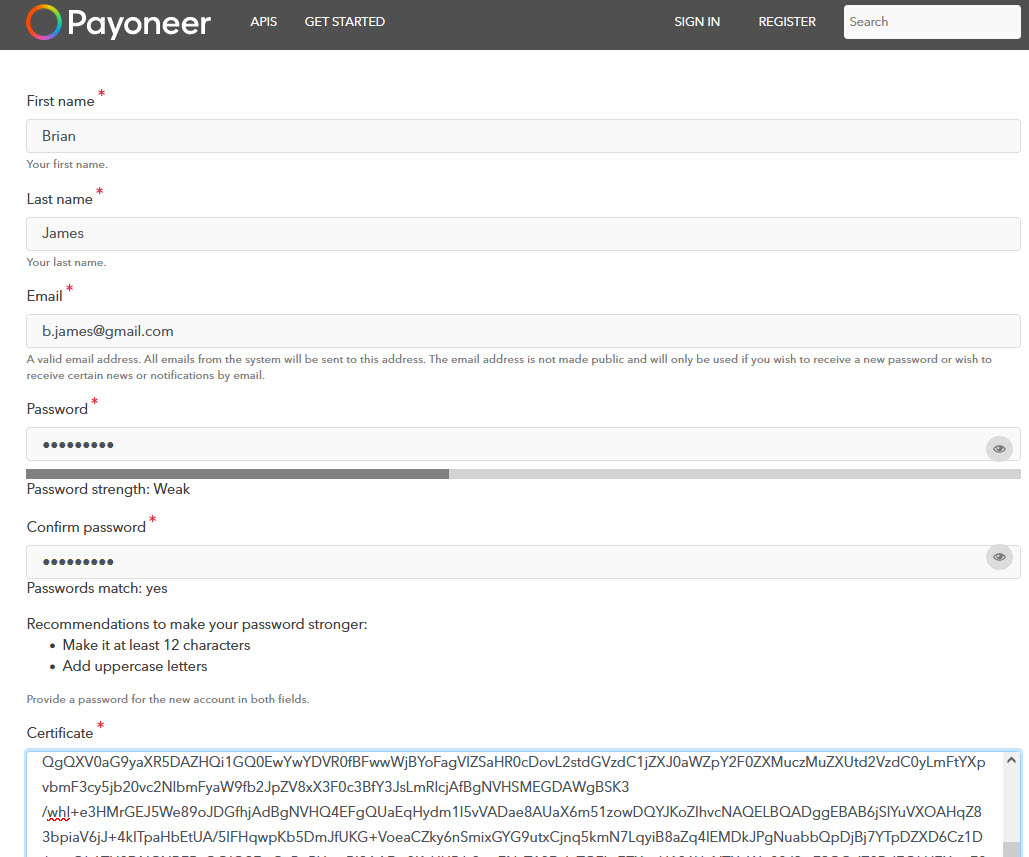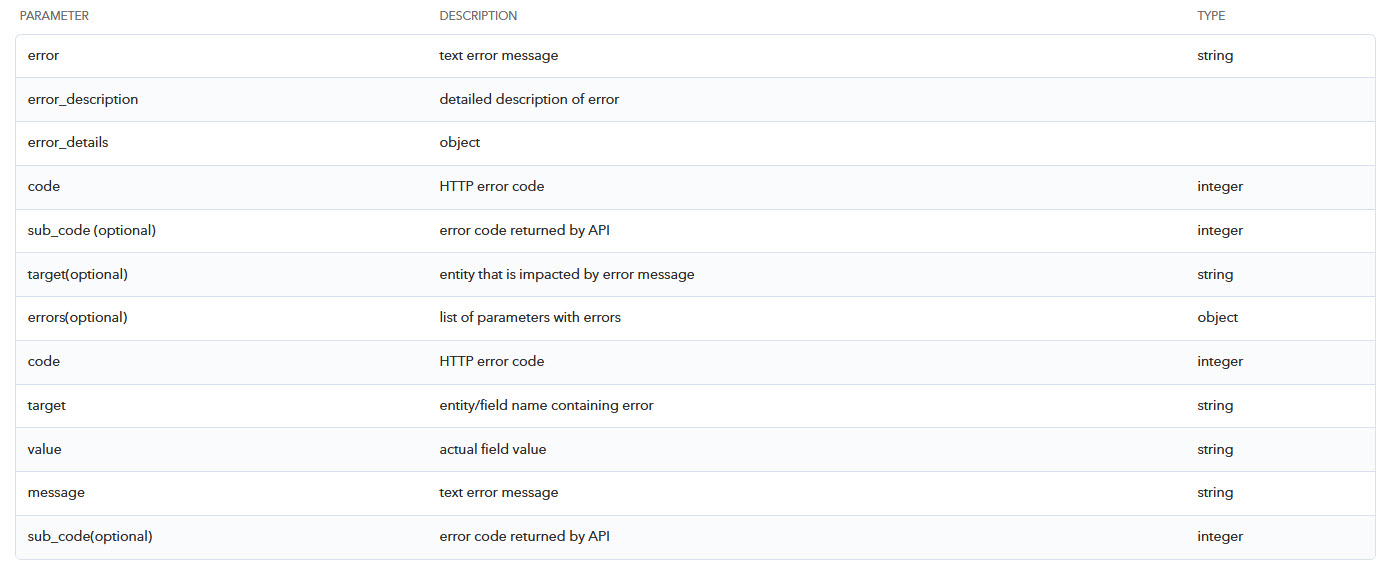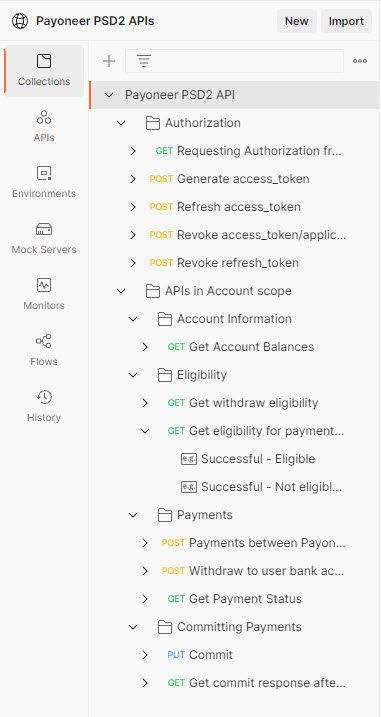Overview
Payoneer provides an easy-to-implement solution for integrating its services on 3rd party platforms using an API infrastructure. API calls are routed through a security gateway that verifies the bearer in the http header for authorizing the request. Service endpoints expose true RESTful resources and apply standardized request and response formats.
Bearer Tokens
Calls to Payoneer's OPen API use OAuth2 bearer tokens with OpenID connect as the mechanism for authorizing client requests. OAuth2 is an authorization framework enabling applications to obtain limited access to user accounts on an HTTP service. It works by delegating user authentication to the service that hosts the user account, and authorizing third-party applications to access the user account. For further information refer to RFC-6749.
Credentials
Prior to using the API, developers will receive Client ID and Client Secret credentials that are required for making calls to the API. In addition, developers are required to provide a Redirect URI that will be configured for redirecting users back to an endpoint on your platform, after the user grants authorization. The URI provided must be a valid static sub-resource. Note that this property cannot be dynamically reconfigured during authorization requests for security reasons.
Account Id
Calls that impact user account data require that a valid Access Token be provided for an Account Id on behalf of which the request is being made. Calls impacting user data require that an Account Id be provided as a parameter on the URL path. The user's Account Id is obtained by decoding the JWT string returned from a request for a token (that has been authorized by the user).
Validation
Payoneer's security gateway will validate the Access Token provided. If validation fails, a 401 error is returned to the caller specifying the issue at hand. If validation is successful, the gateway calls the endpoint service using the supplied parameters from the caller.


